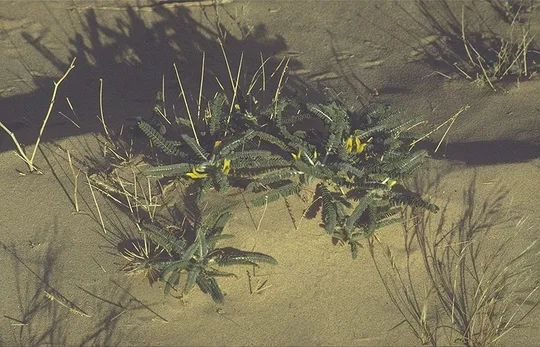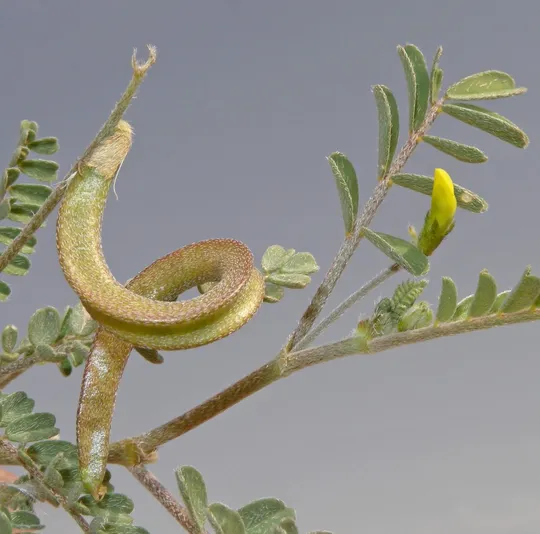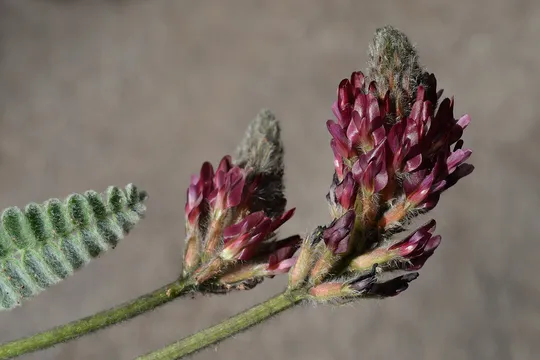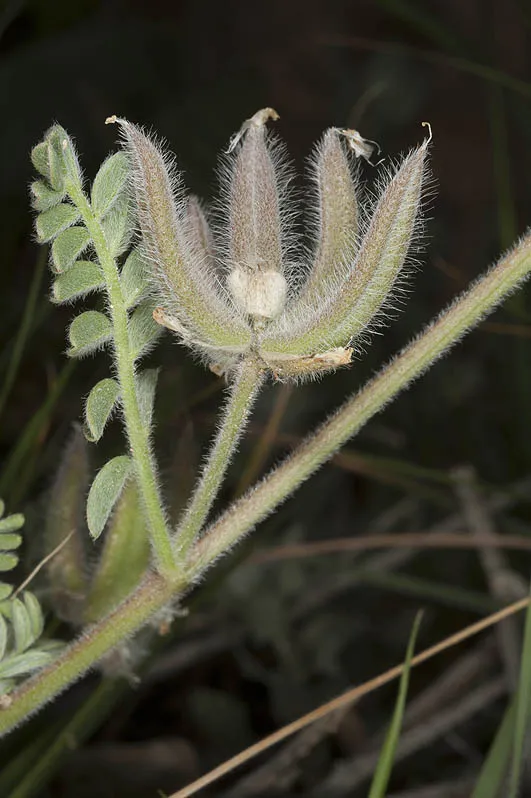Sieber's Milk-vetch
Astragalus sieberi


Astragalus sieberi grows in the Elat
area and in the southern Arava. It is extremely rare and is known today from only
five sites between Yahel and Yotvata, in Wadi Sha'alab, Grofit Plain and near Yahel.
Desert wadis in varied extreme desert landscapes: hamadas,
sands, limestone hills, sandstone and igneous rocks.
For the characteristics of the genus Astragalus –
see A. trimestris. For the
global and local distribution of Astragalus – see A. oocephalus. According to Zohary (1972), A. sieberi
also belongs to the section
Coronopus (see the description in the entry for A.
fruticosus). The
species in this section have large
yellow, nectar-rich flowers that are visited by large solitary
bees (6-23 mm), mostly belonging to the genus Anthophora, which fly
hundreds of meters or even kilometers from one flower to another. Five species
from this section grow in Israeli deserts: A. dactylocarpus, A. sieberi, A.
sparsus, A. trigonus
and A.
fruticosus. A. sieberi is the thorniest species in this
section and its range is the most arid; it grows only in extreme deserts with less
than 50 mm annual precipitation. It is possible that A. sieberi may be an extreme thorny form of
A. dactylocarpus – the entire plant is smaller, thornier, its leaves are smaller
and its fruits shorter but pointed just like in A. dactylocarpus. However, the Floras of the
Middle East region as well as the experts on this group afford A.
sieberi the status of a separate species from A.
dactylocarpus. A detailed long-term study of
the populations, while describing the spatial and inter-annual variance, could
provide an answer to the question of whether A. sieberi is an independent species or an arid variety of A.
dactylocarpus.
·
Astragalus
sieberi is extremely rare in both regions in the extreme
south where it grows and it is difficult to assess with certainty changes and
trends in the number of sites over the years, due to the few collections and
observations made. The species disappeared from the sites on which it was
collected and seen in the 1950s and 1960s and was found on other sites in the 1980s
and 1990s.
·
The local distribution
pattern is of individual plants scattered over the site and often of only a
single plant. There is no information available regarding the condition of the
seed bank from which the species could renew itself in rainy years.
·
The small number
of plants makes the species vulnerable to extinction under conditions of
prolonged and frequent droughts.
·
One of the sites
is located in the Hai-Bar Nature Reserve and additional sites are included in
the Elat Massif Reserve.
·
Apparently, A. sieberi is endangered only in Israel; its global distribution is relatively broad
and it does not appear in lists of red plants.
Surveys should be conducted in the southern Arava and in
the Elat area to obtain an updated picture of the number and size of the
populations. The known sites should be monitored and the long-term trends of
individual plants and populations should be studied.
Astragalus sieberi is found in the
extreme deserts of the Arabian Peninsula, Egypt, Sinai, Iraq, Kuwait, Syria,
Iran and Israel. It was recently found in southern Jordan, in one of the
canyons descending from the of Petra area.
Astragalus
sieberi is an extremely rare dwarf shrub of extreme desert areas in Israel.
There are few populations and the number of known individuals is small. Southern
Israel is the northern limit of its range.
ראה קדד לביד.
Current Occupancy Map
| 1000 squre meter pixel | 5000 squre meter pixel | 10000 squre meter pixel | |
|---|---|---|---|
| number of observations | 0 | 0 | 0 |
| in total pixels | 0 | 0 | 0 |
| Family | Fabaceae |
| Classification | On the endangered species list |
| Ecosystem | Desert |
| Chorotype | Eastern Saharo - Arab |
| Conservation Site | Wadies in the Yahel and Yotvata region in southern Arava |
| Rarity |
1
3
6
|
|---|---|
| Vulnerability |
0
2
4
|
| Attractiveness |
0
0
4
|
| Endemism |
0
0
4
|
| Red number |
1
3.2
10
|
| Peripherality | S |
| IUCN category | DD EW EX LC CR EN VU NT |
| Threat Definition according to the red book | Vulnerable |
 Based on:
Based on:






